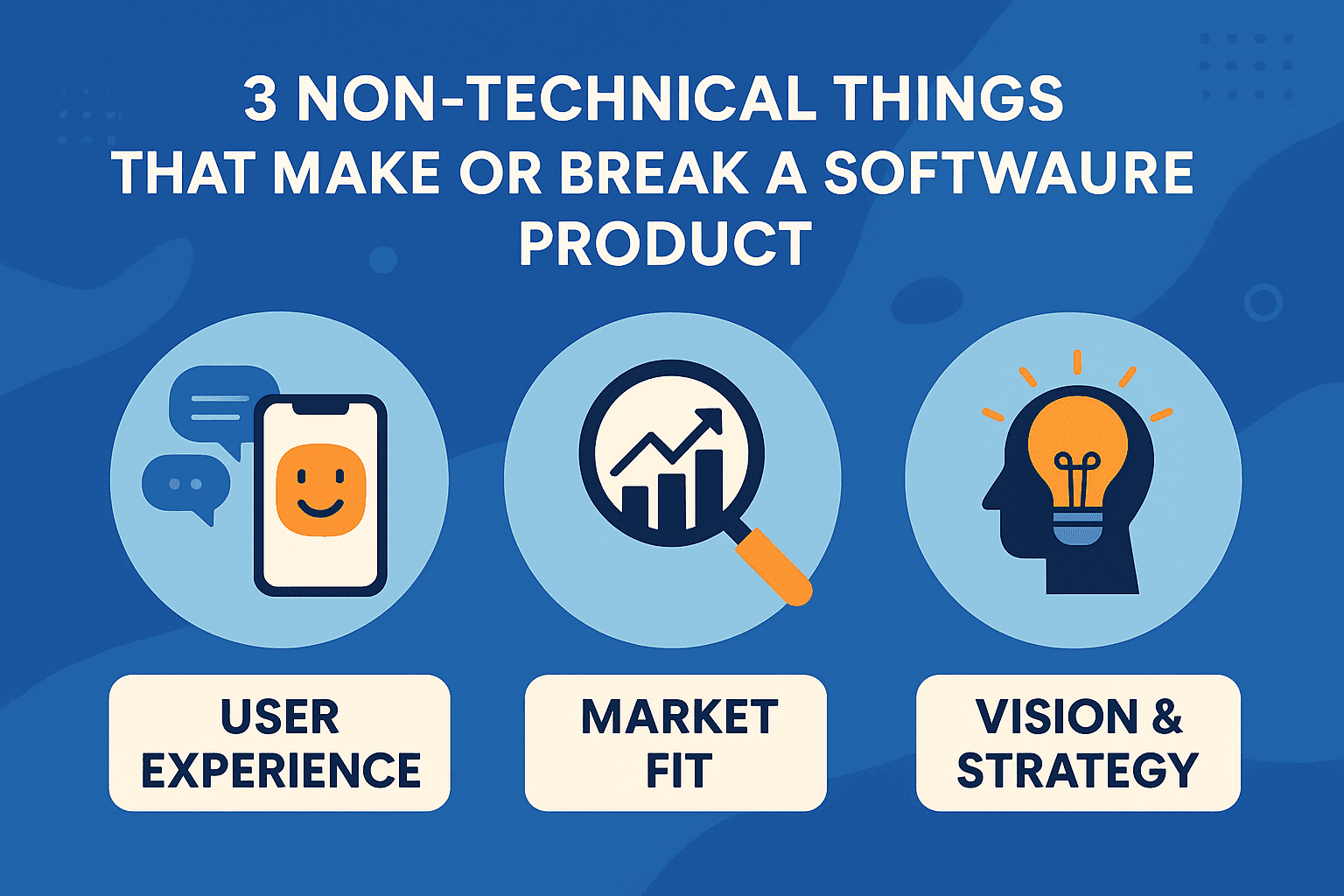3 Non-Technical Things That Make or Break a Software Product

Introduction
Great code alone doesn’t guarantee a successful software product. While technical excellence is essential, it’s often non-technical factors that determine whether a product thrives or fails in the market. Founders and product teams who ignore these elements risk building something functional — but forgettable.
Here are three powerful, non-technical factors that can make or break your software product:
1.
No matter how sophisticated your tech stack is, if users can’t figure out how to use your product — they won’t. A smooth, intuitive experience matters more than clever code.
Why it matters:
- First impressions form in seconds. A clunky or confusing interface can cause drop-offs before the user even tries the product.
- Friction in onboarding prevents users from discovering your core value.
What to focus on:
- Minimize steps required to get started.
- Use tooltips, walkthroughs, and sample data to demonstrate value quickly.
- Design with empathy — understand your user's goals, frustrations, and behaviors.
Example: Notion’s onboarding feels personalized and frictionless, allowing users to experience value within minutes — even without tutorials.
2.
You can’t sell what you can’t explain. Poor messaging, unclear positioning, or vague branding can sink a product long before anyone sees the UI.
Why it matters:
- A well-positioned product attracts the right audience and sets clear expectations.
- Messaging differentiates your product in a crowded marketplace.
What to focus on:
- Craft a clear value proposition: What problem do you solve? For whom? Why are you better?
- Test messaging early and often — landing pages and ad copy are great tools for this.
- Align your tone of voice with your target users’ worldview and language.
Example: Slack didn’t just promote itself as a chat tool — it positioned itself as “the email killer” for teams, solving real pain with clarity and confidence.
3.
Support is not just about solving problems — it's about creating trust, loyalty, and advocacy. In early-stage products especially, great support can be a powerful growth engine.
Why it matters:
- Users expect fast, helpful responses — especially when bugs appear or features are unclear.
- Active community support can lower churn and drive product-led growth.
What to focus on:
- Set up multiple support channels (chat, email, help docs) early.
- Prioritize fast response times, even if it means dedicating founder time in the early days.
- Build a user community through forums, Discord, or Slack to foster peer-to-peer help and feedback.
Example: Figma grew not just through its features, but through a deeply engaged community and top-notch support. Users felt heard — and stuck around.
Final Thoughts
Your product’s backend may be beautiful, your algorithms may be elegant — but success happens when users understand, experience, and share what you’ve built. The “soft” stuff isn’t optional. It's where great products are made.
So as you build your next big thing, don’t just ship clean code. Ship clarity, experience, and support.


